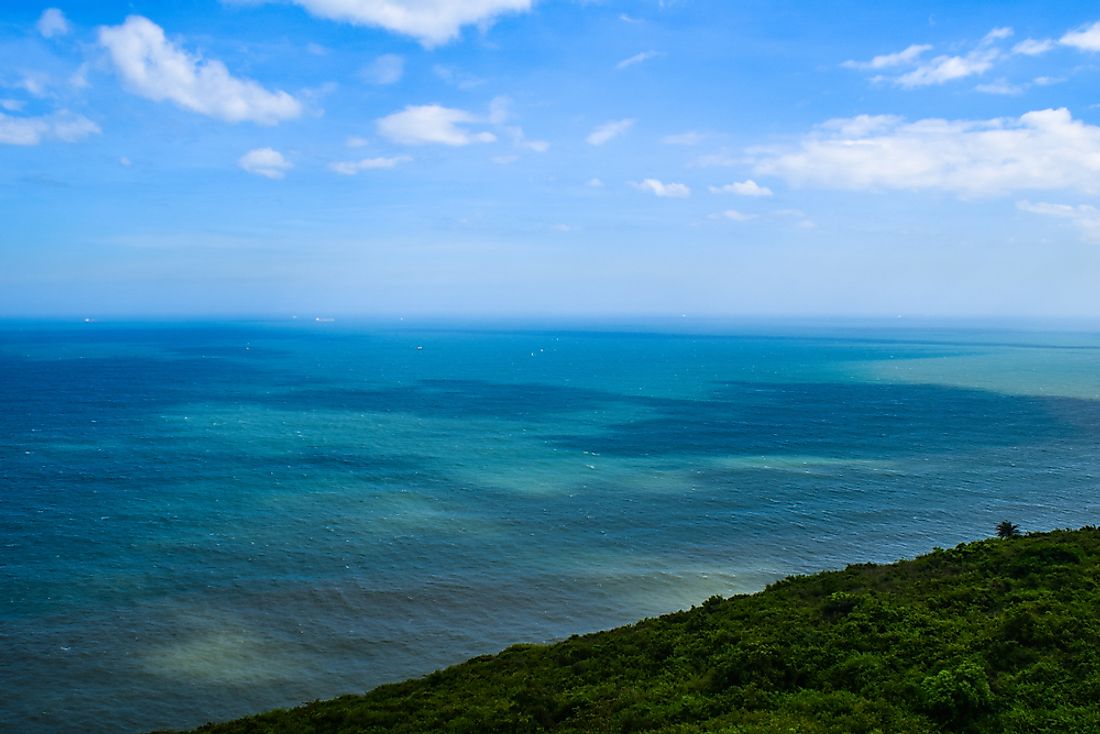The Marginal Seas Of The Indian Ocean

The Indian Ocean is the 3rd largest water body on earth covering almost 27,240,000 square miles. The ocean is so vast that it borders the African continent to the west, Asia to the north, Australia to the eastern side, and the deep Southern Ocean to the south. The ocean is generally warm and supports abundant marine life and a large concentration of phytoplankton. Monsoon winds are prevalent across the ocean and affect the climate of the neighboring coastal lands. A number of islands are found in the ocean with Madagascar being the largest. The Indian Ocean features numerous marginals seas. A marginal sea is a section of an ocean partially enclosed by an island, a peninsula, or an archipelago. Marginal seas are shallower than the ocean and have close proximity to land. The marginal seas of the Indian Ocean are discussed below.
Andaman Sea (Gulf of Martaban)
The Andaman Sea is a basin that is considerably rich in reefs and seagrass. The shallow sea links the Indian Ocean to the South China Sea through the Malacca Straits. The elliptically shaped sea covers approximately 308,882 square miles. The sea is located in a highly active tectonic region hence prone to seaquakes. There is an abundance of marine creatures which are exploited by Burma, Thailand, Nicobar Islands, and India.
Arabian Sea
The Arabian Sea is located in the northern side of Indian Ocean. It borders Iran and Pakistan to the north. To the west is the Arabian Peninsula, Guardafui Channel, and the Gulf of Aden while the Indian continent is on the eastern side. The Arabian Sea is linked to the Red Sea by the Gulf of Aden while the Gulf of Oman links the Arabian Sea to the Persian Gulf. The sea has a maximum depth of 15,262 feet.
Bay of Bengal
The Bay of Bengal is the northeasternmost part India Ocean. It borders Indian, Bangladesh, Myanmar, and the Andaman and Nicobar islands of India. The Bay of Bengal is famous for being the largest bay in the world covering a surface area of 839,000 square miles and a maximum depth of 15,400 feet.
Gulf of Aden
Gulf of Aden (Gulf of Berbera) is part of the Suez Canal route between the Arabian Sea and the Mediterranean Sea. The Bab-el-Mandeb Strait links the Gulf to the Red Sea. The Indian Ocean is linked to the Gulf by the Guardafui Channel. The Gulf of Aden borders Yemen, Arabian Sea, Guardafui Channel Somali, and Djibouti.
Gulf of Oman
The Gulf, also known as the Sea of Oman, is in the real sense a strait that links the Arabian Sea to the Strait of Hormuz. Pakistan and Iran are to the north, the United Arab Emirates to the west, while Oman is to the south of the Gulf. A dead zone measuring approximately 165,000 square kilometers which cannot support marine life is found in the Gulf of Oman.
Laccadive Sea
The Laccadive Sea borders Sri Lanka, India, and the Maldives. Also called Lakshadweep Sea, the waterbody is generally warm with constant temperatures that host over 3,600 species of marine flora and fauna making it a very rich marine biological resource. The Laccadive Sea is famous for pearl fishery as well as the Mannar marine park. The deepest point is 13,553 feet.
Mozambique Channel
The Mozambique Channel is an extension of the Indian Ocean situated between Mozambique and Madagascar. The channel covers a length of approximately 1,000 miles with an average depth of 1,800 feet. Warm Mozambique current blows southwards forming the Agulhas Current experienced along South Africa coast.
Persian Gulf
The Persian Gulf is linked to the Indian Ocean via the Strait of Hormuz. The gulf is rich in fish, pearl oysters, and extensive reef which are threatened by pollution from spills and industrial waste. The Persian Gulf has a maximum length of 615 miles and an average depth of 160 feet while the maximum depth is 300 feet. The Persian Gulf has both natural and artificial islands making it a great tourist attraction site.
Red Sea
The Red Sea lies between Asia and Africa. It is connected to the Indian Ocean by the Gulf of Aden and the Bab el Mandeb Strait. Covering 169,100 miles, the sea has a maximum depth of 9,970 feet. The sea hosts abundant corals and marine life. The sea is the northernmost tropical waterbody on Earth.
Timor Sea
Timor is a shallow sea bordering Timor island, the Arafura Sea, and Australia. There are uninhabited islands in the sea as well as major hydrocarbon reserves beneath the sea. The sea experiences the Timor current which pushes masses of water from the Pacific Ocean to the Indian Ocean.







